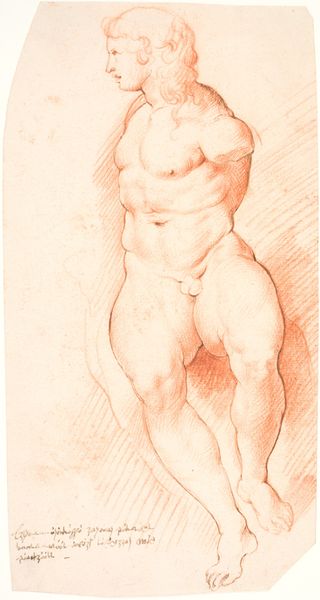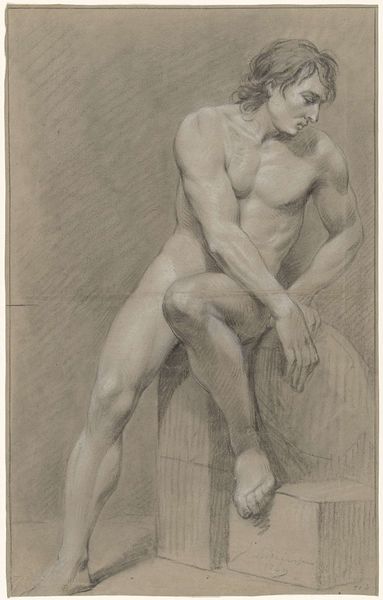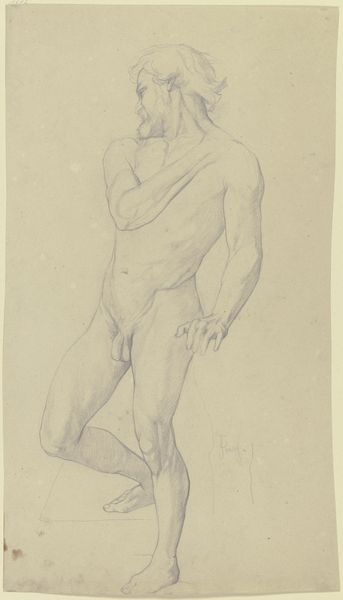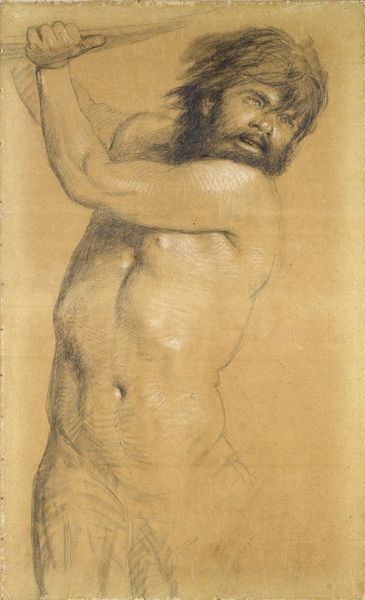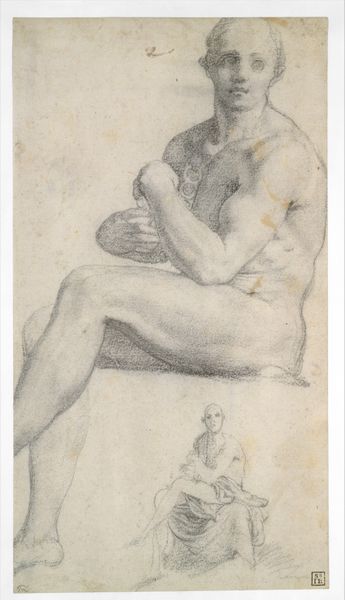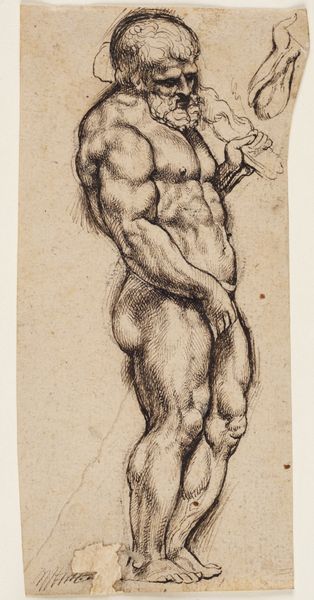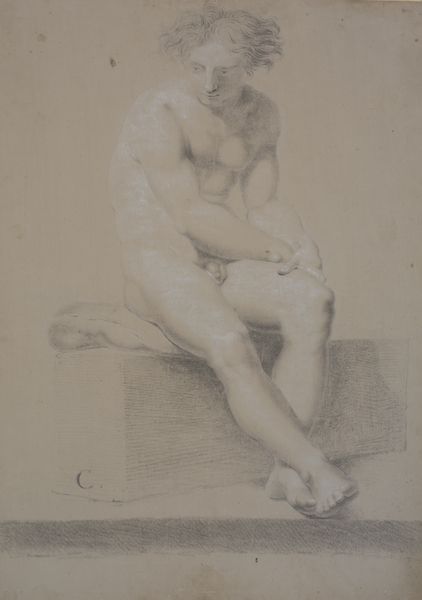
Christ Crowned with Thorns. The torso of Christ. After Van Dyck 1628 - 1630
0:00
0:00
drawing, paper, pencil
#
portrait
#
drawing
#
figuration
#
paper
#
pencil drawing
#
pencil
#
nude
#
early-renaissance
Dimensions: 261 mm (height) x 168 mm (width) (billedmaal)
Editor: Here we have Willem Panneels’ pencil drawing, "Christ Crowned with Thorns. The torso of Christ. After Van Dyck," created sometime between 1628 and 1630. The figure's pose, with the hands clasped, strikes me as conveying both strength and vulnerability. What do you see in this piece? Curator: What I find compelling is how Panneels uses Van Dyck’s subject to explore the performativity of suffering. In the 17th century, depictions of Christ's body were highly politicized. The vulnerability you noticed isn't just a personal feeling but an intentional statement. Consider how artists used religious narratives to speak to broader themes of power, oppression, and even resistance against political forces of the time. How might this drawing have been perceived in a society grappling with religious and political turmoil? Editor: So, it’s not just a drawing of a religious figure, it’s also a commentary on power dynamics? The vulnerability is almost defiant? Curator: Exactly. The "torso" itself becomes a site of power, and arguably protest. The early Renaissance revival is significant. The period turned back to antiquity, as society was leaving medieval thinking. Notice the muscularity, idealized form even in apparent agony? How does that inform or challenge traditional portrayals, particularly of suffering, within religious art? Editor: I hadn't considered that. I was so focused on the emotion, I didn’t realize it spoke to wider societal tensions. Now, seeing the classical form of Christ in such dire emotional straits changes everything. I really see how images during social conflicts gain added meanings. Curator: It demonstrates that art always reflects and refracts its historical moment. These depictions become powerful statements of defiance but more importantly are evidence of society shifting under your feet. Editor: This drawing makes me question the real motivations of society and powerful figures in both history, but also contemporarily. It can have so much more depth than what you see on the surface! Curator: Indeed, engaging with historical context allows us to understand how artists both respond to and shape the narratives of their time.
Comments
No comments
Be the first to comment and join the conversation on the ultimate creative platform.

